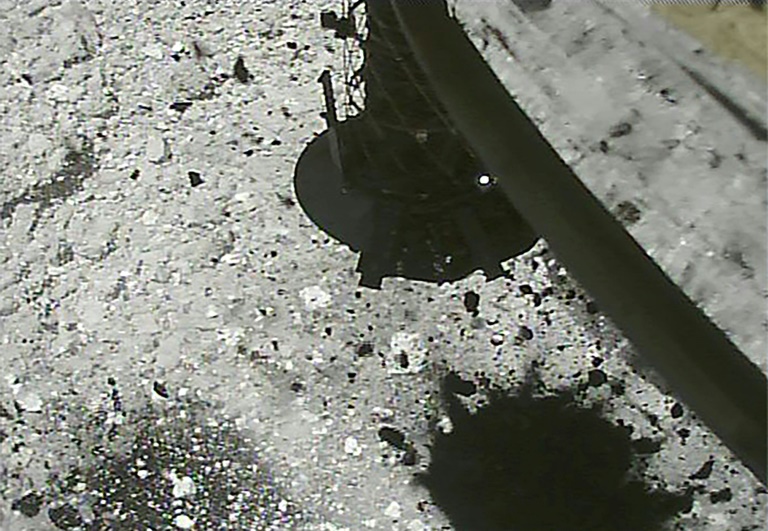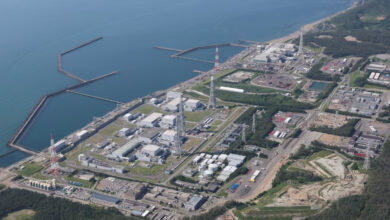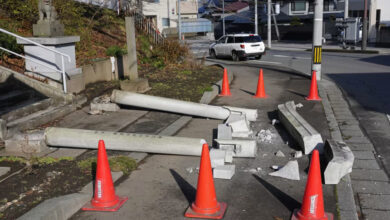
A Japanese probe on Friday launched an explosive device at an asteroid, aiming to blast a crater in the surface and scoop up material that could shed light on how the solar system evolved.
The explosive mission is the riskiest yet attempted by the Japanese space agency’s Hayabusa2 probe that aims to reveal more about the origins of life on Earth.
Hayabusa2 successfully released the so-called “small carry-on impactor” — a cone-shaped device capped with a copper bottom — as scheduled, as the probe hovered just 500 meters (1,650 feet) above the asteroid Ryugu.
The impactor was programmed to explode 40 minutes later, propelling the copper bottom towards Ryugu, where it should gouge a crater into the surface of the asteroid that spins 300 million kilometers from Earth.
Hayabusa2 moved smartly away from the area to avoid being damaged by debris from the explosion or colliding with Ryugu while also releasing a camera to capture images of the event.
Images from a different camera at the bottom of the probe showed the impactor was released at the right position and the right angle.
Control Mission could not immediately confirm the detonation but assumes “the impactor certainly reached the surface,” said Takashi Kubota, engineering researcher at the Japanese space agency (JAXA).
Kubota said the probe’s use of explosives and its “acrobatic” evasive maneuvres were “unprecedented” and he hoped the mission would give scientists a rare peek inside an asteroid.
Although the detonation was too small to move Ryugu off-orbit, JAXA scientist Makoto Yoshikawa said the ability to operate a probe to this level of precision marked “an important achievement in planetary defense” if Earth were threatened by an asteroid.
It will take two weeks for the probe itself to return to its “home position” near Ryugu after the detonation and impact.
The crater could be as large as 10 meters in diameter if the surface is sandy, or three meters across if it is rocky, according to JAXA scientists.
– ‘Dragon Palace’ –
NASA’s Deep Impact project succeeded in creating an artificial crater on a comet in 2005, but only for observation purposes.
The aim of blasting the crater on Ryugu is to throw up “fresh” material from under the asteroid’s surface that could shed light on the early stages of the solar system.
The asteroid is thought to contain relatively large amounts of organic matter and water from some 4.6 billion years ago when the solar system was born.
In February, Hayabusa2 touched down briefly on Ryugu and fired a bullet into the surface to puff up dust for collection, before blasting back to its holding position.
The Hayabusa2 mission, with a price tag of around 30 billion yen ($270 million), was launched in December 2014 and is scheduled to return to Earth with its samples in 2020.
Photos of Ryugu — which means “Dragon Palace” in Japanese and refers to a castle at the bottom of the ocean in an ancient Japanese tale — show the asteroid has a rough surface full of boulders.
Hayabusa2 observes the surface of the asteroid with its camera and sensing equipment but has also dispatched two tiny MINERVA-II rover robots as well as the French-German robot MASCOT to help surface observation.
At about the size of a large fridge, Hayabusa2 is equipped with solar panels and is the successor to JAXA’s first asteroid explorer, Hayabusa — Japanese for falcon.
That probe returned with dust samples from a smaller, potato-shaped asteroid in 2010, despite various setbacks during its epic seven-year odyssey and was hailed as a scientific triumph.




